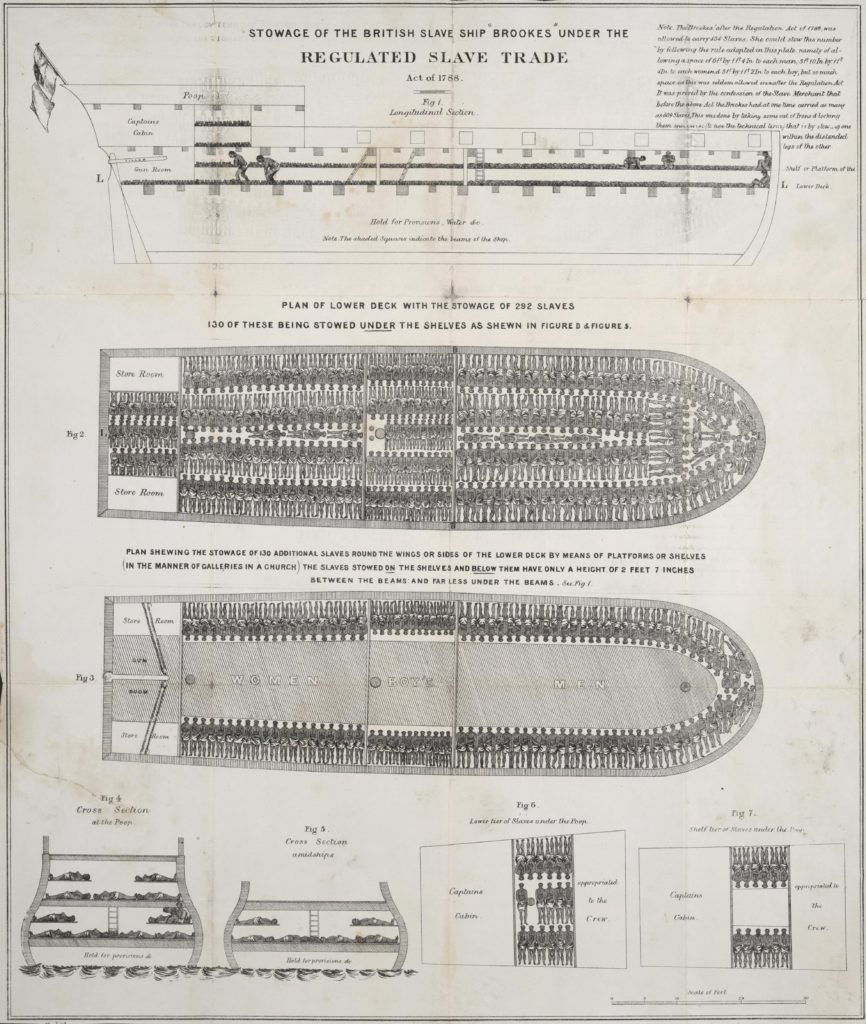a review of Shoshana Zuboff, The Age of Surveillance Capitalism: The Fight for a Human Future at the New Frontier of Power (PublicAffairs, 2019)
Shoshana Zuboff’s The Age of Surveillance Capitalism begins badly: the author’s house burns down. Her home is struck by lightning, it takes Zuboff a few minutes to realize the enormity of the conflagration happening all around her and escape. The book, written after the fire goes out, is a warning about the enormity of the changes kindled while we slept. Zuboff describes a world in which autonomy, agency, and privacy–the walls of her house–are under threat by a corporate apparatus that records everything in order to control behavior. That act of monitoring and recording inaugurates a new era in the development of capitalism that Zuboff believes is destructive of both individual liberty and democratic institutions.
Surveillance Capitalism is the alarm to all of us to get out of the house, lest it burn down all around us. In making this warning however, Zuboff discounts the long history of surveillance outside the middle class enclaves of Europe and the United States and assumes that protecting the privacy of individuals in that same location will solve the problem of surveillance for the Rest.
The house functions as a metaphor throughout the book, first as a warning about how difficult it is to recognize a radical remaking of our world as it is happening: this change is akin to a lightning strike. The second is as an indicator of the kind of world we inhabit: it is a world that could be enhancing of life, instead it treats life as a resource to be extracted. The third uses the idea of house as protection to solve the other two problems.
Zuboff contrasts an early moment of the digitally connected world, an internet of things that was on a closed circuit within one house, to the current moment, where the same devices are wired to the companies that make them. For Zuboff, that difference demonstrates the exponential changes that happened in between the early promise of the internet and its current malformation. Surveillance Capital argues that from the connective potential of the early Internet has come the current dystopian state of affairs, where human behavior is monitored by companies in order to nudge that behavior toward predetermined ends. In this way, Surveillance Capitalism reverses an earlier moment of connectivity boosterism, exemplified by the title of Thomas Friedman’s popular 2005 book, The World is Flat, which celebrated technologically-produced globalization.[1] The decades from the mid to late 2000s witnessed a significant critique of the flat world hypothesis, which could be summed up as an argument for both the vast unevenness of the world, and for the continuous remaking of global tropes into local and varied meanings. Yet, here we are again it seems in 2020, except instead of celebrating flatness, we are sounding the flat alarm.
The book’s very dimensions–it is a doorstop, on purpose–act as an inoculation against the thinness and flatness Zuboff diagnoses as predominant features of our world. Zuboff argues that these features are unprecedented, that they mark an extreme deviation from capitalism as it has been. They therefore require both a new name and new analytic tools. The name
“surveillance capitalism” describes information-gathering enterprises that are unprecedented in human history, and that information, Zuboff writes, is used to predict “our futures for the sake of others’ gain, not ours” (11). As tech companies increasingly use our data to steer behavior towards products and advertising, our ability to experience a deep interiority where we can exercise autonomous choice shrinks. Importantly for Zuboff, these companies collect not just data willingly giving, but the data exhaust that we often unknowingly and unintentionally emit as we move through a world mediated by our devices. Behavioral nudges mark for Zuboff the ultimate endpoint for a capitalism gone awry, a capitalism drives humans to abandon free will in favor of being governed by corporations that use aggregate data about individual interactions to determine future human action.
Zuboff’s flat alarm usefully takes the reader through the philosophical underpinnings of behaviorism, following the work of B.F. Skinner, a psychologist working at Harvard in the mid-twentieth century who believed adjusting human behavior was a matter of changing external environments through positive and negative stimuli, or reinforcements. Zuboff argues that behaviorist attitudes toward the world, considered outré in their time, have moved to the heart of Silicon Valley philosophies of disruption, where they meet a particular kind of mode of capital accumulation driven by the logics of venture, neutrality, and macho meritocracies. The result is a kind of ideology of tools and of making humans into tools, that Zuboff terms instrumentarianism, at once driven to produce companies that are profitable for venture capitalists and investors and to treat human beings as sources of data to be turned toward profitability. Widespread surveillance is a necessary feature of this new world order because it is through that observation of every detail of human life that these companies can amass the data they need to turn a profit by predicting and ultimately controlling, or tuning, human behavior.
Zuboff identifies key figures in the development of surveillance capitalism, including the aforementioned Skinner. Her particular mode of critique tends to focus on CEOs, and Zuboff reads their pronouncements as signs of the legacy of behaviorism in the C-Suites of contemporary firms. Zuboff also spends several chapters situating the critics of these surveillance capitalists as those who need to raise the flat world alarm. She compares this need to both her personal experience with the house fire and the experience of thinkers such as Hanah Arendt writing on totalitarianism. Here, she draws an explicit critique that conjoins totalitarianism and surveillance capital. Zuboff argues that just as totalitarianism was unthinkable as it was unfolding, so too does surveillance capitalism seem an impossible future given how we like to think about human behavior and its governance. Zuboff’s argument here is highly persuasive, since she is suggesting that the critics will always come to realize what it is they are critiquing just before it is too late to do anything about it. She also argues that behaviorism is in some sense the inverse of state-governed totalitarianism, since while totalitarianism attempted to discipline humans from the inside out, surveillance capitalism is agnostic when it comes to interiority–it only deals in and tries to engineer surface effects. For all this ‘neutrality’ over and against belief, it is equally oppressive, because it aims at social domination.
Previous reviews have provided an overview of the chapters in this book; I will not repeat the exercise, except to say that the introduction nicely lays out her overall argument and could be used effectively to broach the topic of surveillance for many audiences. The chapters outlining B.F. Skinner’s imprint on behaviorist ideologies are also useful to provide historical context to the current age, as is the general story of Google’s turn toward profitability as told in Part I. And, yet, the promise of these earlier chapters–particularly the nice turn of phrase, the “‘behavioral means of production” yield in the latter chapters to an impoverished account of our options and of the contradictions at work within tech companies. These lacunae are due at least in part to Zuboff’s choice of revolutionary subject–the middle class consumer.
Toward the end of Surveillance Capitalism, Zuboff rebuilds her house, this time with thicker walls. She uses her house’s regeneration to argue for a philosophical concept she calls the “right to sanctuary,” based largely on the writings of Gaston Bachelard, whose Poetics of Space describes for Zuboff how the shelter of home shapes “many of our most fundamental ways of making sense of experience” (477). Zuboff believes that surveillance capitalists want to bring down all these walls, for the sake of opening up our every action to collection and our every impulse to guidance from above. One might pause here and wonder whether the breaking down of walls is not fundamental to capitalism from the beginning, rather than an aberration of the current age. In other words, does the age of surveillance mark such a radical break from the general thrust of capital’s need to open up new markets and exploit new raw materials? Or, more to the point, for whom does it signify a radical aberration? Posing this question would bring into focus the need to interrogate the complicitness of the very categories of autonomy, agency, and privacy in the extension of capitalism across geographies, and to historicize the production of interiority within that same frame.
Against the contemporary tendency toward effacing the interior life of families and individuals, Zuboff offers sanctuary as the right to protection from surveillance. In this moment, that protection needs thick walls. For Zuboff, those walls need to be built by young people–one gets the sense that she is speaking across these sections to her own children and those of her children’s generation. The problem with describing sanctuary in this way is that it narrows the scope for both understanding the stakes of surveillance and recognizing where the battles for control over data will be fought.
As a broadside, Surveillance Capitalism works through a combination of rhetoric and evidence. Zuboff hopes that a younger generation will fight the watchers for control over their own data. Yet, by addressing largely a well-off, college-educated, and young audience, Zuboff restricts the people who are being asked to take up the cause, and fails to ask the difficult question of what it would take to build a house with thicker walls for everyone.
A persistent concern while reading this book is whether its analysis can encompass otherwheres. The populations that are most at risk under surveillance capitalism include immigrants, minorities, and workers, both within and outside the United States. The framework of data exhaust and its use to predict and govern behavior does not quite illuminate the uses of data collection to track border crossers, “predict” crime, and monitor worker movements inside warehouses. These relationships require an analysis that can get at the overlap between corporate and government surveillance, which Surveillance Capitalism studiously avoids. The book begins with an analysis of a system of exploitation based on turning data into profits, and argues that the new mode of production makes the motor of capitalism shift from products to information, a point well established by previous literature. Given this analysis, it astonishing that the last section of the book returns to a defense of individual rights, without stopping to question whether the ‘hive’ forms of organization that Zuboff finds in the logics of surveillance capital may have been a cooptation of radical kinds of social organizing arranged against a different model of exploitation. Leaderless movements like Occupy should be considered fully when describing hives, along with contemporary initiatives like tech worker cooperatives and technical alternatives like local mesh networks. The possibility that these radical forms of social organization may be subject to cooptation by the actors Zuboff describes never appears in the book. Instead, Zuboff appears to mistranslate theories of the subject that locate agency above or below the level of the individual to political acquiescence to a program of total social control. Without taking the step considering the political potential in ‘hive-like’ social organization, Zuboff’s corrective falls back on notions of individual rights and protections and is unable to imagine a new kind of collective action that moves beyond both individualism and behaviorism. This failure, for instance, skews Zuboff’s arguments toward the familiar ground of data protection as a solution rather than toward the more radical stances of refusal, which question data collection in the first place.
Zuboff’s world is flat. It is a world in which there are Big Others that suck up an undifferentiated public’s data, Others whose objective is to mold our behavior and steal our free will. In this version of flatness, what was once described positively is now described negatively, as if we had collectively turned a rosy-colored smooth world flat black. Yet, how collective is this experience? How will it play out if the solutions we provide rely on bracketing out the question of what kinds of people and communities are afforded the chance to build thicker walls? This calls forth a deeper issue than simply that of a lack of inclusion of other voices in Zuboff’s account. After all, perhaps fixing the surveillance issue through the kinds of rights to sanctuary that Zuboff suggests would also fix the issue for those who are not usually conceived of as mainstream consumers.
Except, historical examples ranging from Simone Browne’s explication of surveillance and slavery in Dark Matters to Achille Mbembe’s articulation of necropolitcs teach us that consumer protection is a thin filament on which to hang protection for all from overweaning surveillance apparati–corporate or otherwise. One could easily imagine a world where the privacy rights of well-heeled Americans are protected, but those of others continue to be violated. To reference one pertinent example, companies who are banking on monetizing data through a contractual relationship where individuals sell the data that they themselves own are simultaneously banking on those who need to sell their data to make money. In other words, as legal scholar Stacy-Ann Elvy notes (2017), in a personal data economy low-income consumers will be incentivized to sell their data without much concern for the conditions of sale, even while those who are well-off will have the means to avoid these incentives, resulting in the illusion of individual control and uneven access to privacy determined by degrees of socioeconomic vulnerability. These individuals will also be exposed to a greater degree of risk that their information will not stay secure.
Simone Browne demonstrates that what we understand as surveillance was developed on and through black bodies, and that these populations of slaves and ex-slaves have developed strategies of avoiding detection, which she calls dark sousveillance. As Browne notes, “routing the study of contemporary surveillance” through the histories of “black enslavement and captivity opens up the possibility for fugitive acts of escape” even while it shows that the normative surveillance of white bodies was built on long histories of experimentations with black bodies (Browne 2015, 164). Achille Mbembe’s scholarship on necropolitics was developed through the insight that some life becomes killable, or in Jasbir Puar’s (2017) memorable phrasing, maimable, at the same time that other life is propagated. Mbembe proposes “necropolitcs” to describe “death worlds” where “death” not life, “is the space where freedom and negotiation happen” where “vast populations are subjected to conditions of life conferring on them the status of living dead” (Mbembe 2003, 40). The right to sanctuary appears to short circuit the spaces where life has already been configured as available for expropriation through perpetual wounding. Crucial to both Browne and Mbembe’s arguments is the insight that the study of the uneven harms of surveillance concomitantly surfaces the tactics of opposition and the archives of the world that provide alternative models of refuge outside the contractual property relationship evoked across the pages of Surveillance Capitalism.
All those considered outside the ambit of individualized rights, including those in territories marked by extrajudicial measures, those deemed illegal, those perennially under threat, those who while at work are unprotected, those in unseen workplaces, and those simply unable to exercise rights to privacy due to law or circumstance, have little place in Zuboff’s analysis. One only has to think of Kashmir, and the access that people with no ties to this place will now have to building houses there, to begin to grasp the contested politics of home-building.[2] Without an acknowledgement of the limits of both the critique of surveillance capitalism and the agents of its proposed solutions, it seems this otherwise promising book will reach the usual audiences and have the usual effect of shoring up some peoples’ and places’ rights even while making the rest of the world and its populations available for experiments in data appropriation.
_____
Sareeta Amrute is Associate Professor of Anthropology at the University of Washington. Her scholarship focuses on contemporary capitalism and ways of working, and particularly on the ways race and class are revisited and remade in sites of new economy work, such as coding and software economies. She is the author of the book Encoding Race, Encoding Class: Indian IT Workers in Berlin (Duke University Press, 2016) and recently published the article “Of Techno-Ethics and Techno-Affects” in Feminist Review.
_____
Notes
[1] Friedman (2005) attributes this phrase to Nandan Nilekani, then Co-Chair, of Indian Tech company Infosys (and subsequently Chair of the Unique Identification Authority of India).
[2] Until 2019, Articles 370 and 35A of the Indian Constitution granted the territories of Jammu and Kashmir special status, which allowed the state to keep on it’s books laws restricting who could buy land and property in Kashmir by allowing the territories to define who counted as a permanent resident.. After the abrogation of Article 370, rumors swirled that the rich from Delhi and elsewhere would now be able to purchase holiday homes in the area. See e.g. Devansh Sharma, “All You Need to Know about Buying Property in Jammu and Kashmir“; Parvaiz Bukhari, “Myth No 1 about Article 370: It Prevents Indians from Buying Land in Kashmir.”
_____
Works Cited
- Browne, Simone. 2015. Dark Matters: On the Surveillance of Blackness. Durham, NC: Duke University Press.
- Elvy, Stacy-Ann. 2017. “Paying for Privacy and the Personal Data Economy.” Columbia Law Review 117:6 (Oct). 1369-1460.
- Friedman, Thomas. 2005. The World Is Flat: A Brief History of the Twenty-First Century. New York: Farrar, Straus and Giroux.
- Mbembe, Achille. 2003. “Necropolitics.” Public Culture 15:1 (Winter). 11-40.
- Mbembe, Achille. 2019. Necropolitics. Durham, NC: Duke University Press.
- Puar, Jasbir K. 2017. The Right to Maim: Debility, Capacity, Disability. Durham, NC: Duke University Press.



